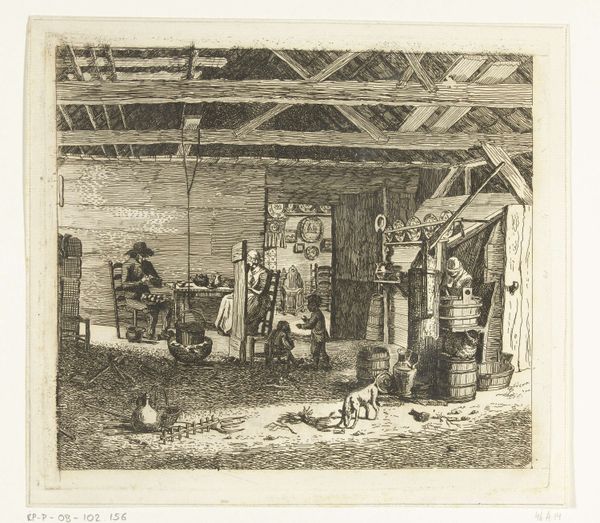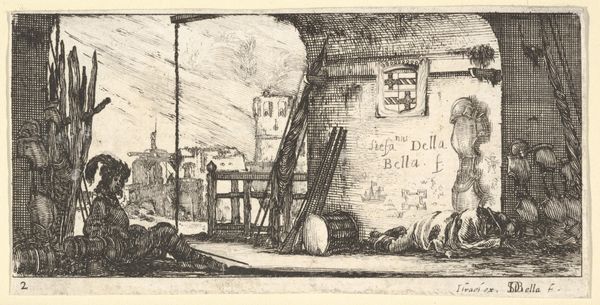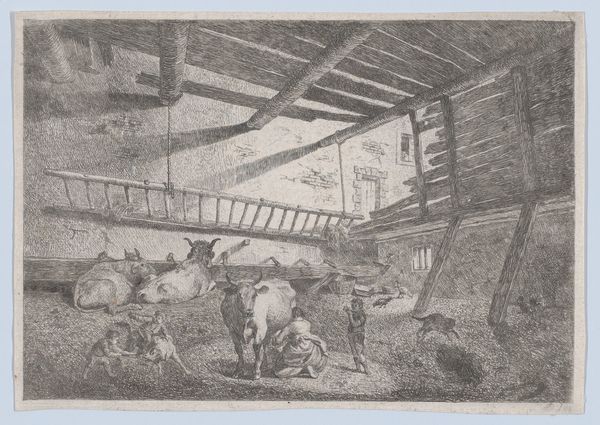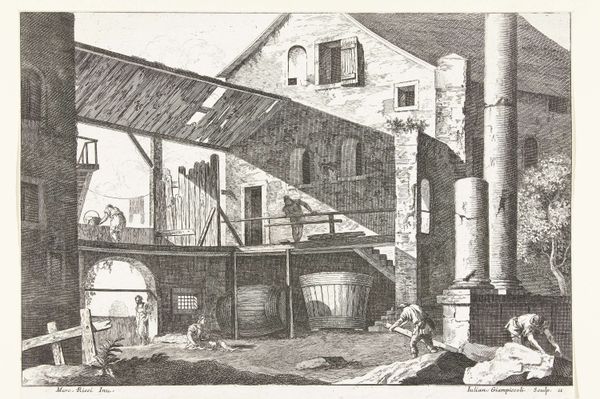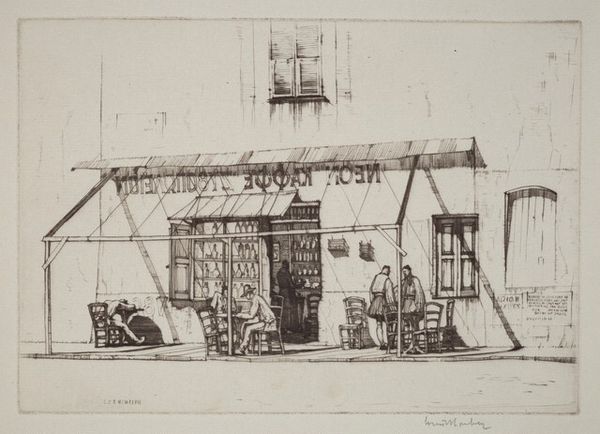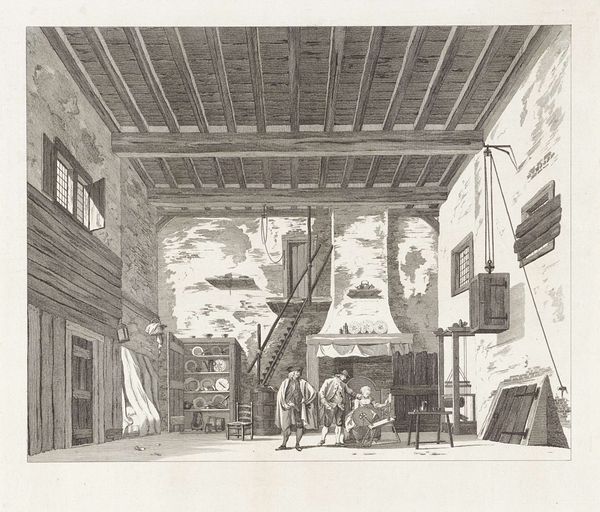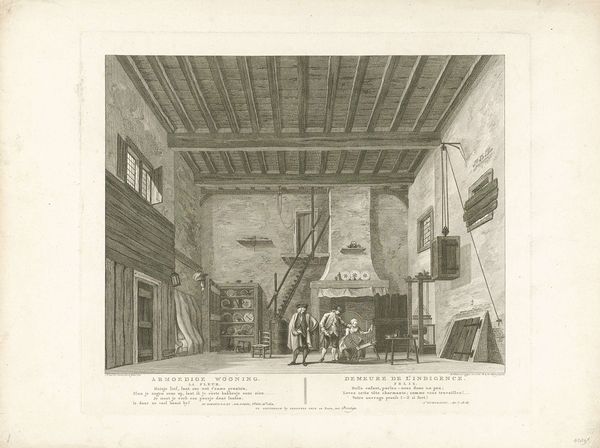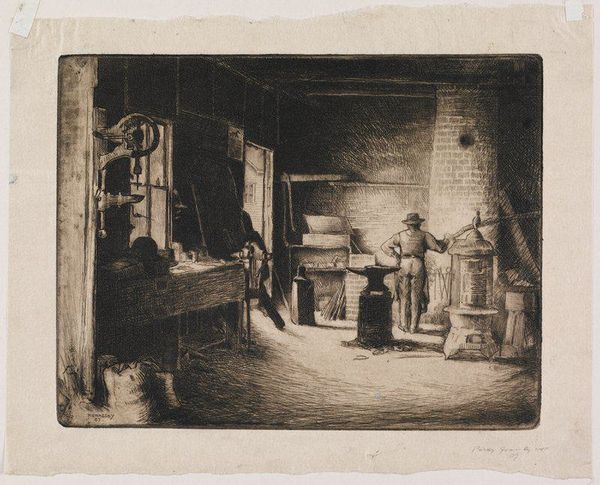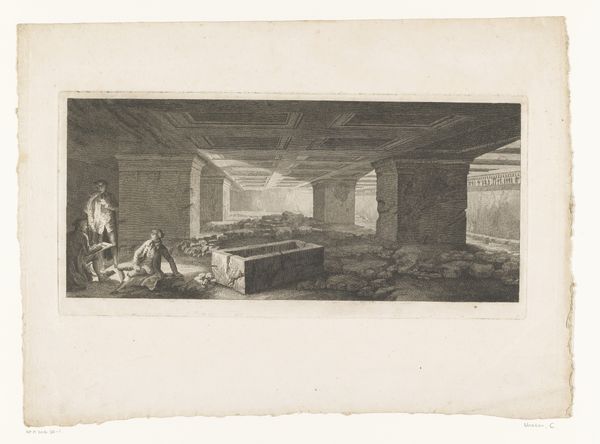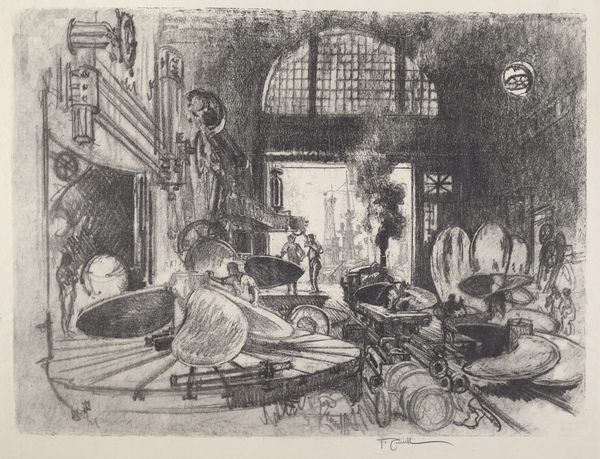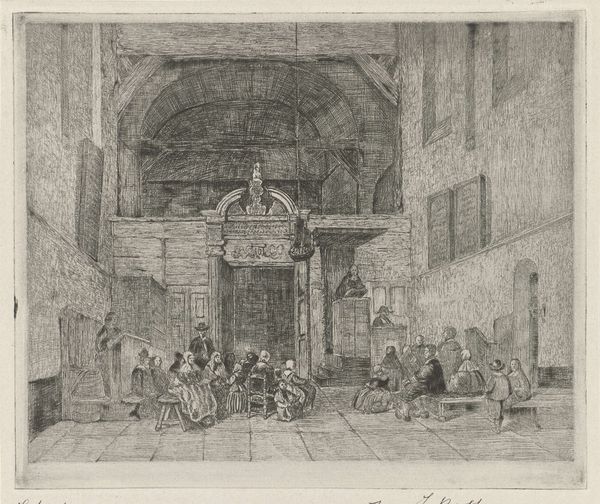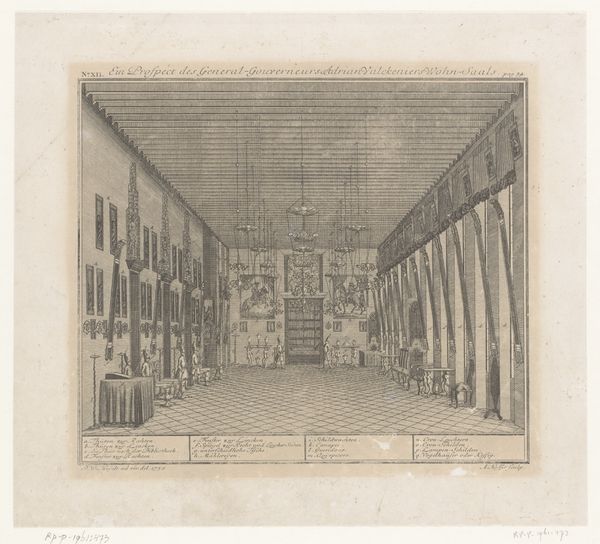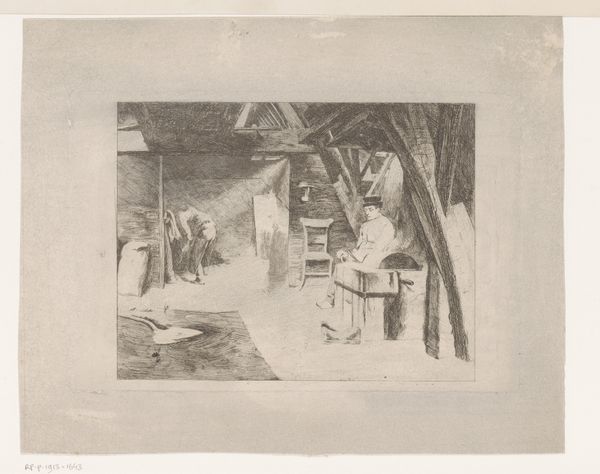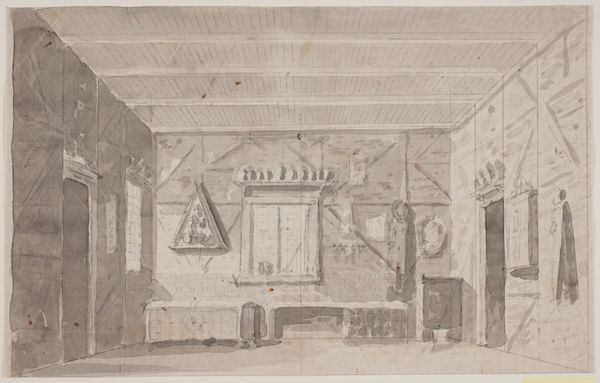
De stal van de herberg 't Molentje buiten de Utrechtse Poort 1778 - 1838
0:00
0:00
print, engraving
#
dutch-golden-age
# print
#
line
#
genre-painting
#
history-painting
#
engraving
#
realism
Dimensions: height 253 mm, width 328 mm
Copyright: Rijks Museum: Open Domain
Curator: This engaging engraving, created sometime between 1778 and 1838, offers us a glimpse inside "De stal van de herberg 't Molentje buiten de Utrechtse Poort," or, The Stable of the Inn 't Molentje Outside the Utrecht Gate. The work is by Anthonie van den Bos and currently resides at the Rijksmuseum. Editor: It feels intimate, doesn’t it? The detail pulls you in, almost like a whispered secret about a bustling little world hidden away. And yet there's a kind of loneliness too; that single figure working away in the left corner. It strikes me as being more complicated than just a scene. Curator: You pick up on something crucial there. The engraving uses the everyday to signify broader cultural patterns. Genre scenes like these provide glimpses into 18th-century Dutch life, but on closer inspection, the symbols embedded are quite telling. Consider the placement of figures, tools, the plates decorating the back wall – all hint at the social and economic dynamics of the time. Editor: Those hanging plates on the back wall definitely catch the eye – and they have a very casual but considered placement, like a Pinterest mood board of the era. So it’s a representation of life, but very carefully constructed… Curator: Precisely! The “Dutch Golden Age” was long past, but the image continues to echo that era’s fascination with domestic life, civic virtue, and even prosperity through labour. While it may seem simple at first glance, the artist presents visual emblems that viewers of the time would recognize, symbols laden with significance. Editor: Symbols, or maybe just evidence of someone living there… What's also compelling is the sense of captured transience. I keep imagining the sounds – dogs barking, people talking – just a slice of ordinary time now ossified. Like finding a beautiful shard of pottery. Curator: And what does that shard tell us? How do we use it to rebuild understanding? This work reflects not just Dutch culture but also humanity's ongoing efforts to find meaning and identity within shared experiences, our labor, our rituals of hospitality, represented by the inn itself. Editor: Right, maybe it’s less about the Golden Age and more about these enduring echoes – how images and spaces hold our collective memory, offering these constant opportunities for a kind of temporal dialogue. It makes me wonder what people a century from now will read in *our* carefully curated depictions of everyday life. Curator: A fascinating, almost haunting reflection. I agree.
Comments
No comments
Be the first to comment and join the conversation on the ultimate creative platform.
